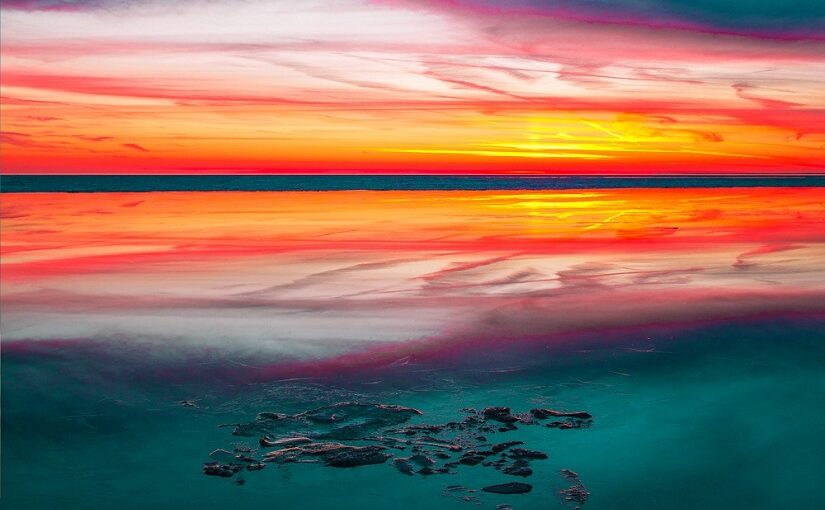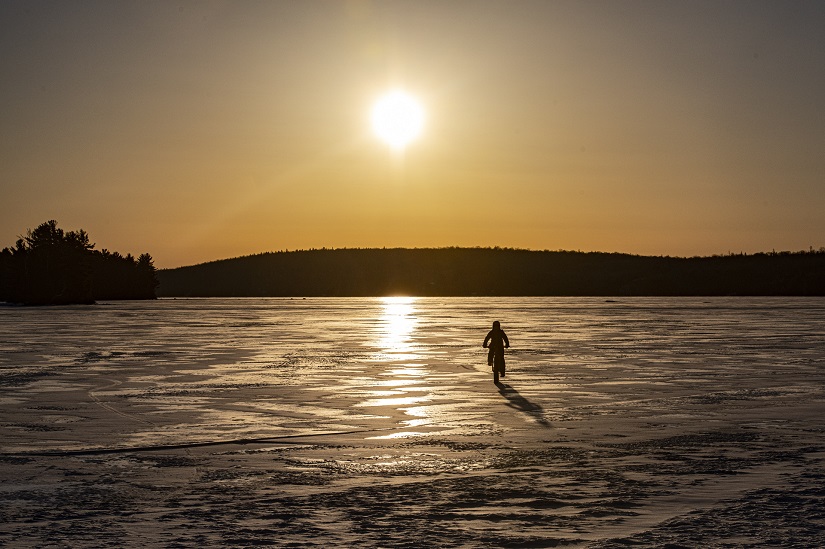Winter skies aren’t known for their colour.
While a crisp layer of snow will brighten any landscape, we associate the colder months with dreary grey clouds.
It’s not just in our heads; winter does come with fewer clear days.
During the colder months, the upper atmosphere is often warmer than the air at ground level. These air masses are very stable since air only rises when it is warmer than the air above it. Without the mixing caused by rising air, clouds spread smoothly across the sky, obscuring our view of the sun and stars.
But when wind breaks the clouds apart, we are often treated to some truly spectacular skies.
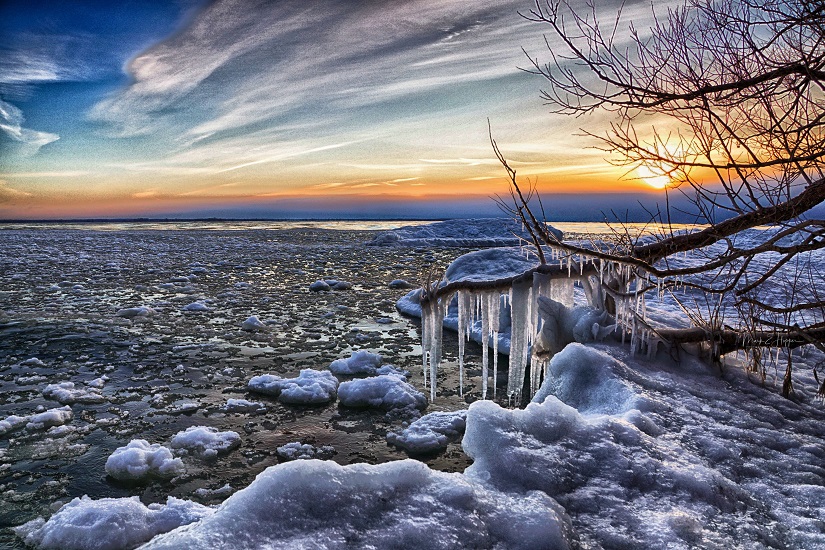
The science of winter skies
You’ve probably heard that winter is the perfect time for stargazing. There is less humidity in the air and fewer suspended particles scatter the light.
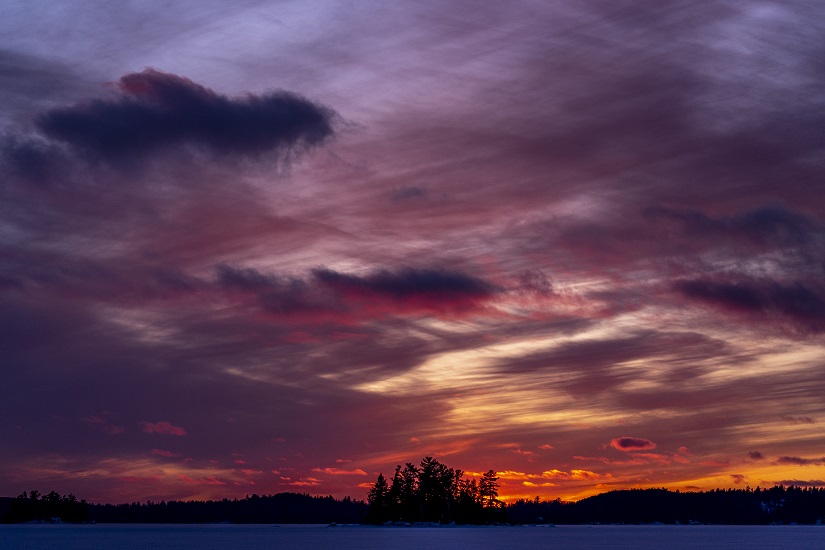
Clearer skies improve sunset views in the same way – it’s a myth that pollution creates better sunsets! Winter’s dry, clean air means that colours are most vivid in this season.
Those pesky clouds can also increase the overall effect. When the sun can break through at the horizon, its light is often reflected on the underside of the clouds. The clouds become a textured theatre screen, spreading reds, oranges, and purples across the sky.
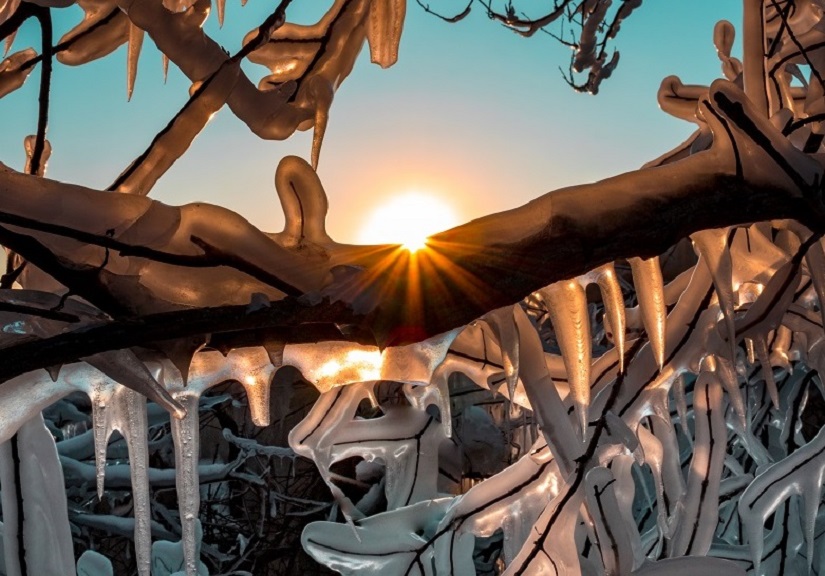
How to plan sunset viewing
When conditions are right, any shoreline, meadow, or high point with a good view to the southwest will do as a viewing spot.
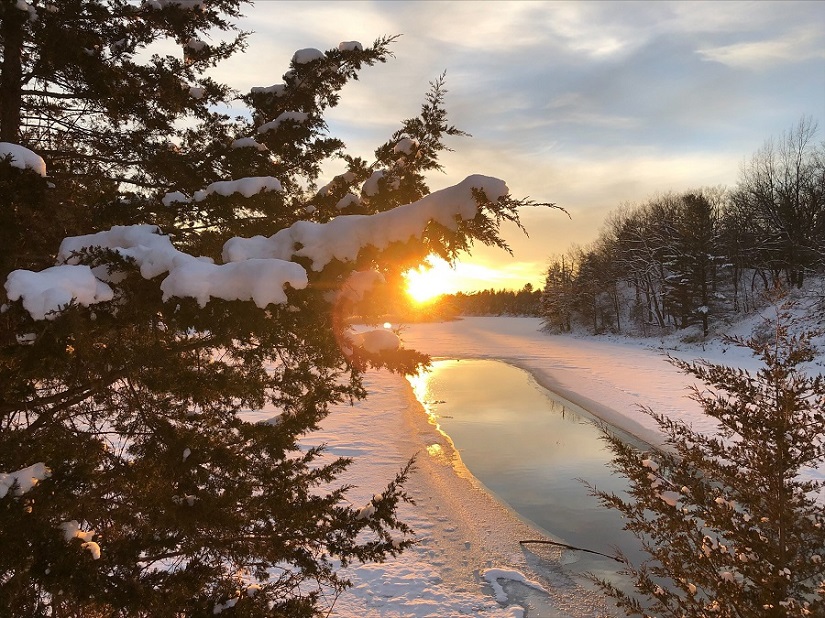
The beaches at Pinery Provincial Park, MacGregor Point Provincial Park, Silent Lake Provincial Park, Presqu’ile Provincial Park, and Darlington Provincial Park are all great choices.
If you’re planning a stationary viewing experience, be sure to bundle up. Your body can cool down quickly when you’re not moving. Dress in layers and consider bringing some hot chocolate.

Protect your eyes. Even in winter, it’s important to not look directly at the sun.
Remember that it will be dark after the sun sets. Make sure you have an easy route back to your vehicle or campsite. Don’t forget to bring a flashlight or headlamp.
Perfect end to a perfect day
As you’re planning your next winter hike or skiing adventure, add some time for sunset viewing into your schedule.
Check your local sunset time for the correct date and latitude, and show up about thirty minutes early for the full show. If you’re lucky enough to have clear skies during your visit, you’ll be treated to a one-of-a-kind experience.
Sunsets aren’t just for summer. Don’t let winter end before you can enjoy one of nature’s spectacular winter wonders.
